Pearls are often referred to as the treasures of the sea, and are one of the most popular forms of jewellery. Since the beginning of time their natural beauty, simplicity and elegance have been a symbol of power, wealth and refinement.
There is a range of different pearls available, with the most popular being ‘South Sea pearls’ and other ‘fresh water pearls’.
South Sea pearls are deemed to be more valuable, based on two factors. Firstly, they have better properties, such as a superior lustre. Secondly, they are rarer. Only one pearl can be cultivated per South Sea shell.
However, the fresh water species still have great properties at a fraction of the value of South Sea pearls. A determining factor is the number of pearls that can be simultaneously grown in each fresh water shell.
Pearls have six main factors that define their quality. Aside from the obvious one, size, there is also lustre, surface, shape, nacre (outer coating) and colour. Each one of these properties has its own significance in creating the perfect pearl.
Like all jewellery, pearls require a certain level of care. Their porous nature can absorb liquids and chemicals that can deteriorate their lustre and nacre.
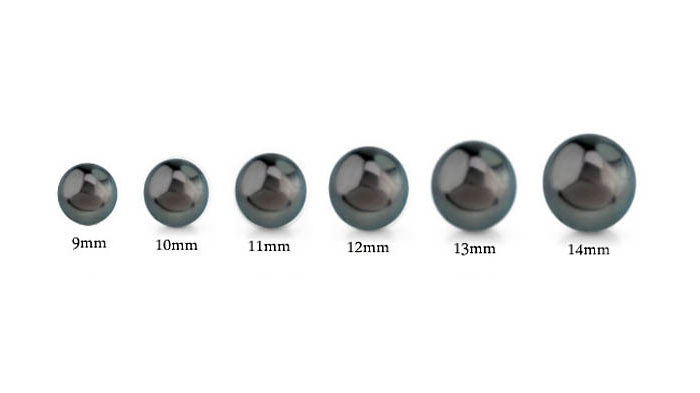
Size
Pearls are measured in millimetres (no fractional measurements). Round and off-round pearls are measured from the shortest diameter. All other shapes are measured along their two longest diameters. The larger the pearl, the more valuable it becomes.
Lustre
Lustre is another way of defining the way a pearl shines. It signifies the surface quality of a pearl. There are four grades of lustre:
- Very high (AAA)
- High (AA)
- Medium (A)
- Soft (B)
This is the quality of light reflections from the surface of the pearl. A sharper and brighter shine results in a superior lustre. Soft or dull pearls produce a weak, diffused or fuzzy reflection.
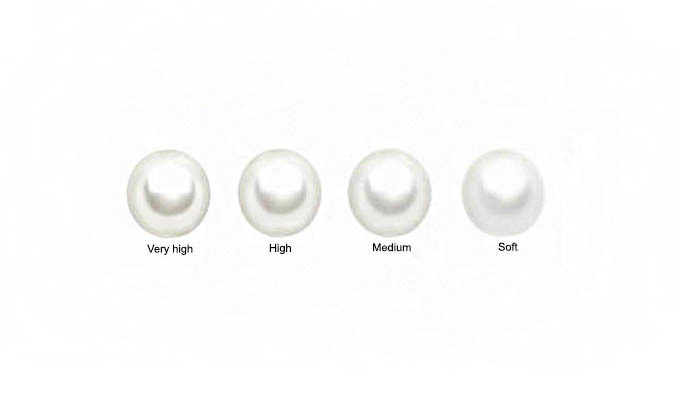
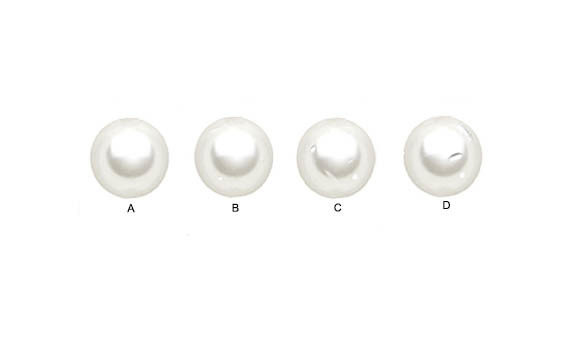
Surface Quality
Generally, there are four ratings used for surface quality:
(A) Clean-Very Lightly Blemished: these pearls have smooth surfaces with minimal blemishes visible to the naked eye, usually less than 10% of the surface.
(B) Lightly Blemished: these pearls exhibit less than 30% imperfections on their surface.
(C) Moderately Blemished: these pearls usually have less than two thirds of their surfaces covered with imperfections.
(D) Heavily Blemished: these pearls have over two thirds of their surface covered with imperfections.
All surface grading is done with the naked eye (no magnification is used).
Shape
earls are usually sorted according to 5 different shapes:
- Round Pearls: these are almost perfect spheres with less than 2% variation in their diameter. To determine whether a pearl is round, a professional technician rolls it across a table. If it rolls straight, it is a round. If the pearl veers off more than slightly, it is semi-round.
- Semi-Round Pearls: these are slightly imperfect spheres whose diameter variation is less than 5%, but greater than 2%.
- Semi-Baroque Pearls: these are pearls which exhibit at least one axis of rotation. They are divided into four categories: drop, button, oval and pear.
- Ringed Pearls: also known as ‘circled pearls’, they have consistent streaks, rings or circle grooves that are perpendicular to an axis of rotation over 30% of their surface.
- Baroque Pearls: do not have any axis of rotation (they cannot be spun on a table top).
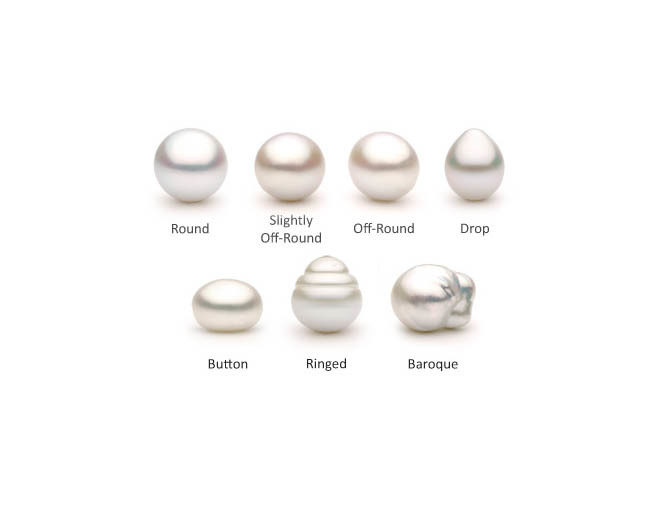
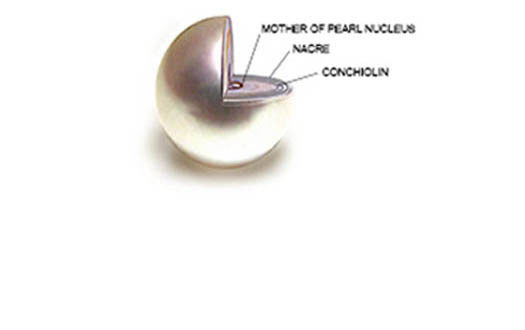
Nacre
Nacre and lustre are closely tied in the rating value of a pearl. The thicker the nacre the more shiny or lustrous the pearl appears. Thicker nacre also makes for a more robust pearl and creates an illusion of depth. Since it is linked with lustre (one of the most desirable pearl) qualities, nacre is also a valuable quality in a pearl.
Colour
The colour of a pearl is natural. They range from white to pink, and gold to black and have many in-between shades referred to as overtones. For example, the Tahitian pearl has blue, silver reddish purple and peacock green present. The white pearl is (and always will be) the most popular colour of choice.
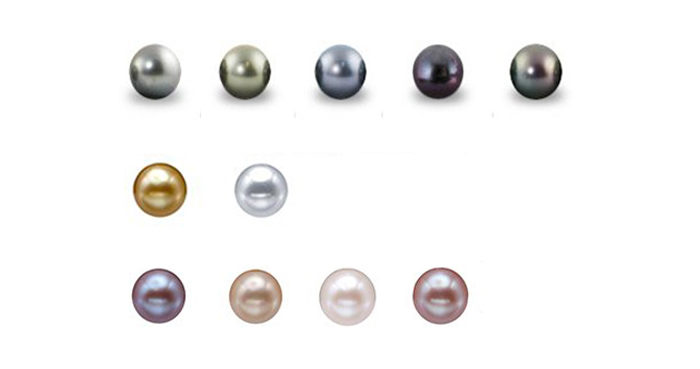
Visit our Melbourne Studio
The region became culturally distinguishable from the Lowlands from the later Middle Ages into the modern period.
